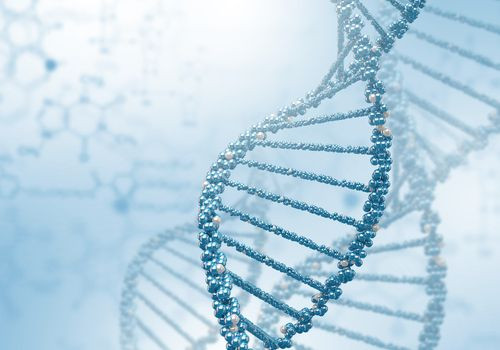Human Genome Is Mostly 'Junk DNA,' With Only 8.2% Functional

Our genome is all of our genetic material taken together, and in the 11 years since the Human Genome Project mapped out the exact location of DNA on the chromosomes — a feat similar to early explorers charting planet earth — scientists have debated the value and function of some genes compared to others. Among the initial discoveries, researchers found just two percent of our total DNA is coding, while the remaining 98 percent is non-coding. Soon enough, lay people began to derisively refer to this as junk DNA.
Now, in a new study conducted at Oxford University, geneticists discovered not all of that junk is purposeless, while gaining deeper insight into the balance of power among our genes. They determined that just 8.2 percent of all human DNA is "functional," and within that small portion, some DNA performs more significant tasks. “We tend to have the expectation that all of our DNA must be doing something,” said Dr. Chris Rands, first author of the study and a former student in the MRC Functional Genomics Unit at Oxford University. “In reality, only a small part of it is.”
What Does 'Functional' DNA Mean?
With the mapping of the human genome (completed in 2003), scientists discovered about 20,500 genes and of these, only about two percent are coding DNA — meaning, they transcribe the code for making proteins and so help create the overall blueprint for making a human being — while non-coding DNA constituted the vast majority (98 percent) of the genome. Yet, many scientists argued that this so-called junk DNA might serve some less-easy-to-see purpose; for instance, might all the non-coding DNA be switching on and off the coding-DNA, and so regulating the influence of particular genes?
To explore this question, the Oxford University team decided to approach the issue from an evolutionary perspective. They began their study by identifying how much of our genome has avoided accumulating changes over 100 million years of mammalian evolution — their reasoning was, important function needs to be retained, so the one clear indication that DNA matters would be if it has not changed. Investigating thoroughly, the researchers used a computational approach to compare the complete DNA sequences of various mammals, from mice, guinea pigs and rabbits to dogs, horses and even humans. After great effort, they came to some surprising conclusions.
“We found that 8.2 percent of our human genome is functional,” said Dr. Gerton Lunter of the Wellcome Trust Centre for Human Genetics at Oxford University and joint senior author of the study. This means, Lunter explains, the rest of our genome is just leftover evolutionary material — if the genome were a house, this would be all the unused stuff stored in the attic — part of the genome that has undergone losses or gains in the DNA code. Even more, among the significant 8.2 percent, not all of that DNA is equally important. A little over one percent codes for proteins carrying out the critical biological processes in the body, while the other roughly seven percent is thought to be involved in the switching on and off of genes — at different times, in response to various factors, and in different parts of the body.
Ultimately, what does all of this mean in practical terms? “When sequencing the genomes of patients, if our DNA was largely functional, we'd need to pay attention to every mutation,” said Dr. Chris Pointing of the MRC Functional Genomics Unit at Oxford University and joint senior author. “In contrast, with only eight percent being functional, we have to work out the eight percent of the mutations detected that might be important. From a medical point of view, this is essential to interpreting the role of human genetic variation in disease.”
Source: Pointing CP, Lunter G, Rands CM, Meader S. 8.2% of the Human Genome Is Constrained: Variation in Rates of Turnover across Functional Element Classes in the Human Lineage. PLOS Genetics. 2014.



























